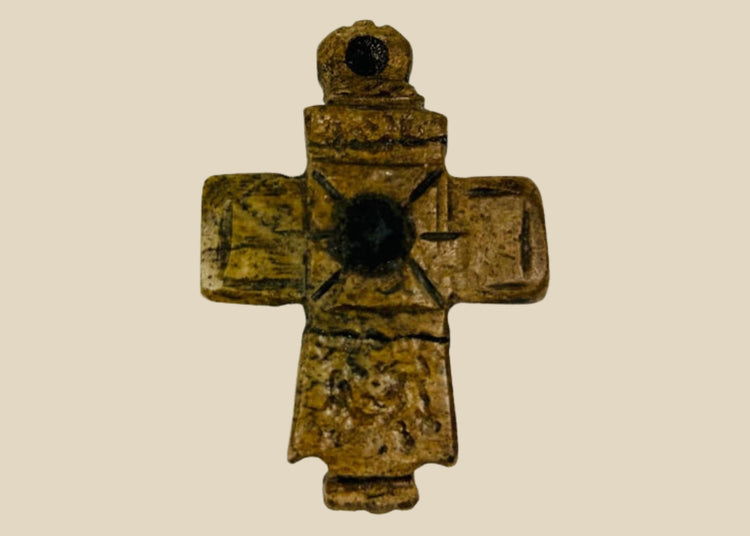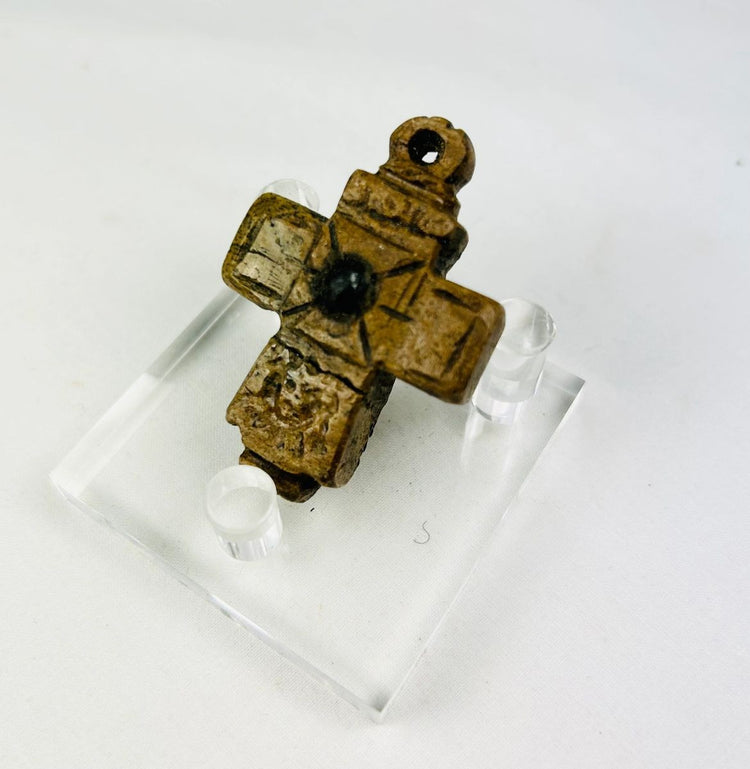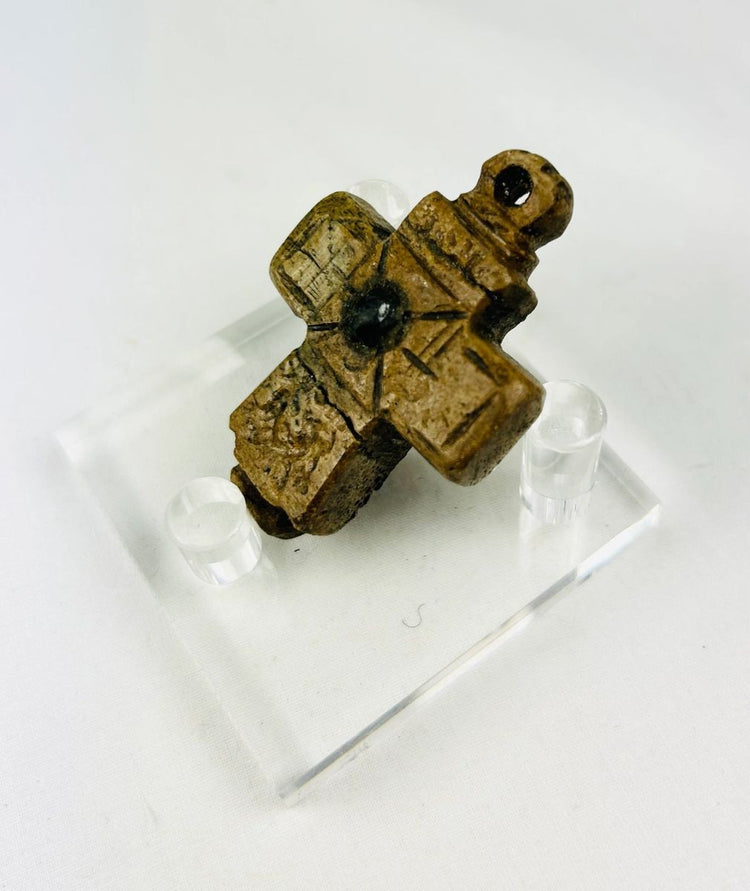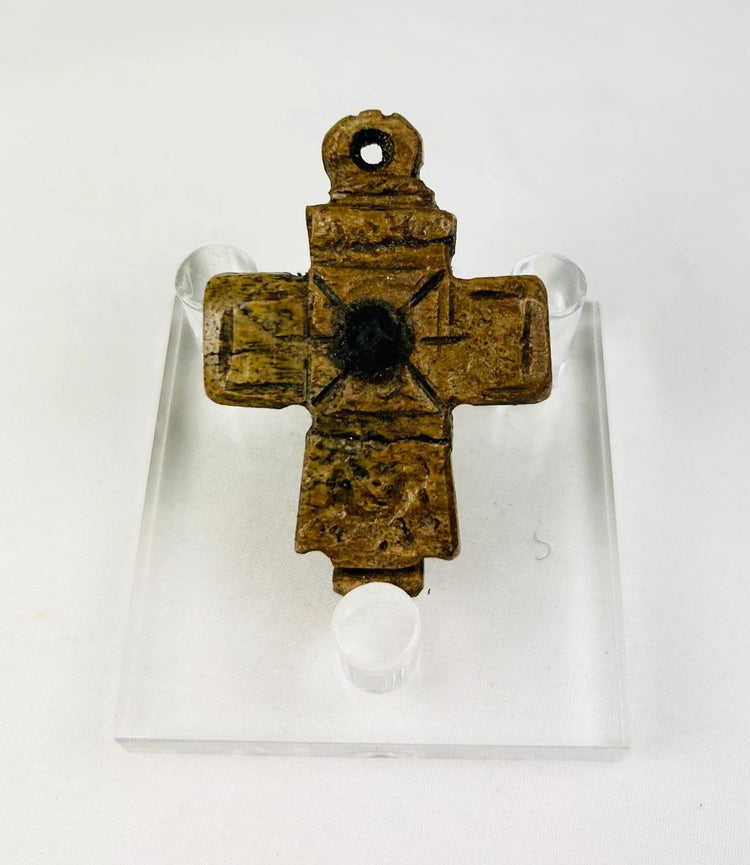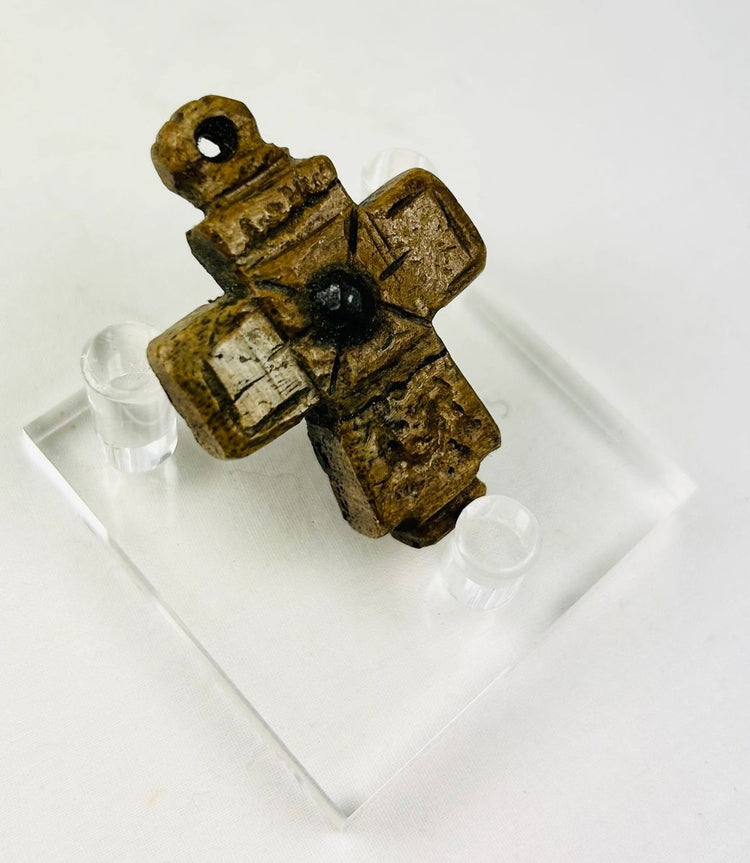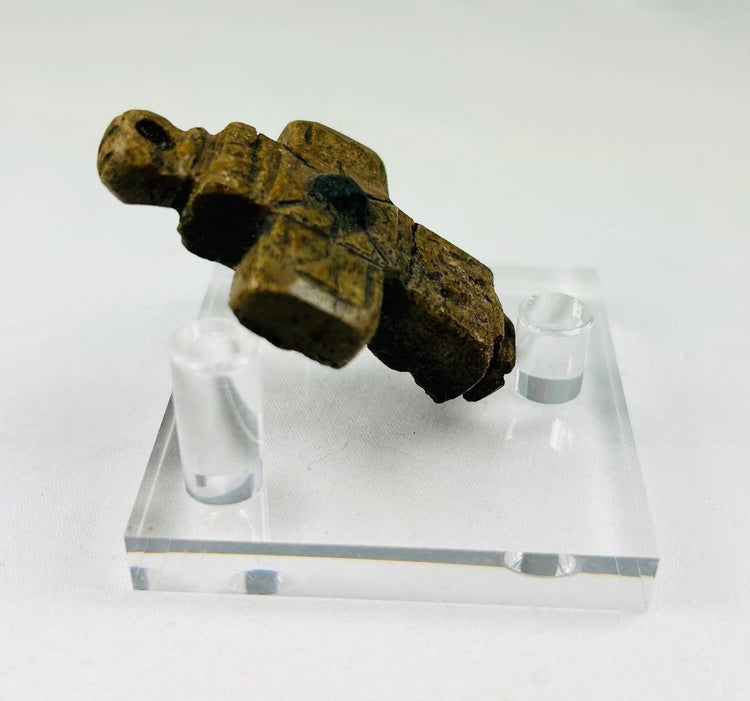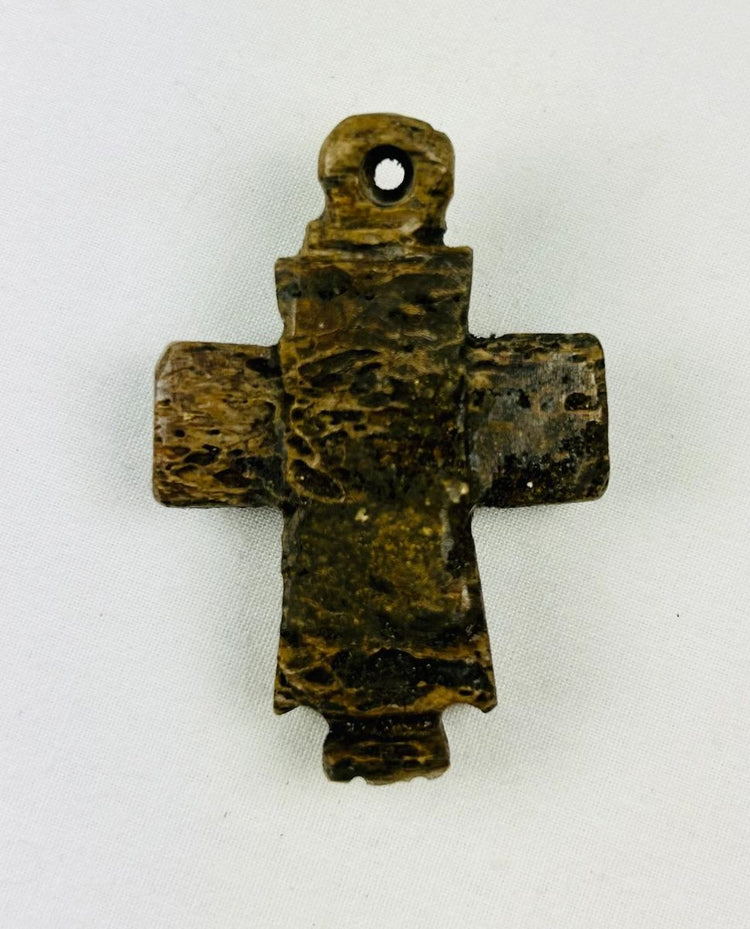Byzantine Pectoral Cross | Carved Christian Devotional Pendant | 9th–12th C AD
Description
More
Less
Historical Context & Origin
Region: Eastern Roman (Byzantine) Empire
Material: Hand-carved animal bone
Period: Middle Byzantine Period, circa 900–1200 AD
Description
This ancient carved bone cross is a fine example of Byzantine Christian devotional art. Fashioned from dense animal bone with a rich brown patina, the piece shows smooth wear from centuries of handling. A pierced suspension hole at the top indicates it was worn as a pectoral pendant—likely by a pilgrim, monk, or devout layperson. The front face is incised with a cross motif featuring a central raised boss or nodule, possibly symbolizing the Holy Sepulchre or divine light. Subtle chisel marks and geometric linework frame the design, while the reverse remains plain and organically worn.
Features
- Hand-carved from a single section of aged animal bone
- Incised linear and geometric motifs on the obverse
- Central raised boss of symbolic devotional meaning
- Deeply worn suspension hole for wearing or hanging
Cultural Significance
During the Middle Byzantine period, small pectoral crosses such as this were carried as personal expressions of Christian faith and as protective amulets. Bone—an organic material tied to humility and mortality—was often used for devotional objects by monks and pilgrims, in contrast to precious metals reserved for liturgical use. Similar examples have been recovered from religious centers such as Constantinople, Antioch, and Cappadocia, reflecting the widespread devotional practices of the era.
Condition
Excellent preservation with age-consistent wear. Suspension hole intact. Warm polished patina throughout with slight fissuring typical of ancient carved bone.
Dimensions (approximate)
Height: 2 in
Width: 1.5 in
Age
Approximately 900–1100 years old
Description
Historical Context & Origin
Region: Eastern Roman (Byzantine) Empire
Material: Hand-carved animal bone
Period: Middle Byzantine Period, circa 900–1200 AD
Description
This ancient carved bone cross is a fine example of Byzantine Christian devotional art. Fashioned from dense animal bone with a rich brown patina, the piece shows smooth wear from centuries of handling. A pierced suspension hole at the top indicates it was worn as a pectoral pendant—likely by a pilgrim, monk, or devout layperson. The front face is incised with a cross motif featuring a central raised boss or nodule, possibly symbolizing the Holy Sepulchre or divine light. Subtle chisel marks and geometric linework frame the design, while the reverse remains plain and organically worn.
Features
- Hand-carved from a single section of aged animal bone
- Incised linear and geometric motifs on the obverse
- Central raised boss of symbolic devotional meaning
- Deeply worn suspension hole for wearing or hanging
Cultural Significance
During the Middle Byzantine period, small pectoral crosses such as this were carried as personal expressions of Christian faith and as protective amulets. Bone—an organic material tied to humility and mortality—was often used for devotional objects by monks and pilgrims, in contrast to precious metals reserved for liturgical use. Similar examples have been recovered from religious centers such as Constantinople, Antioch, and Cappadocia, reflecting the widespread devotional practices of the era.
Condition
Excellent preservation with age-consistent wear. Suspension hole intact. Warm polished patina throughout with slight fissuring typical of ancient carved bone.
Dimensions (approximate)
Height: 2 in
Width: 1.5 in
Age
Approximately 900–1100 years old
You May Also Like






















